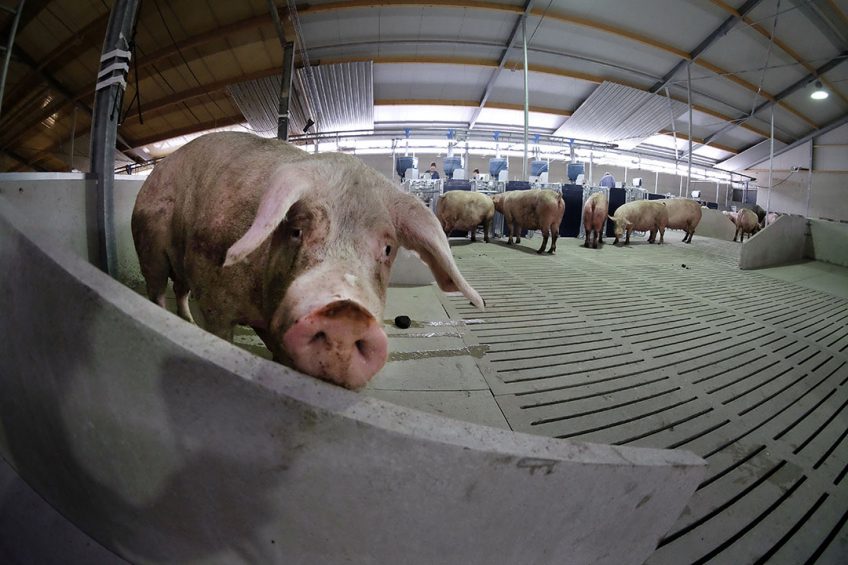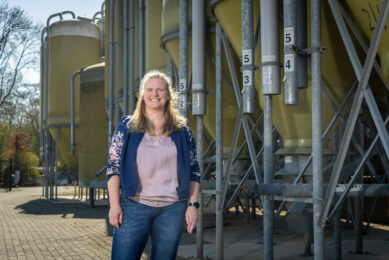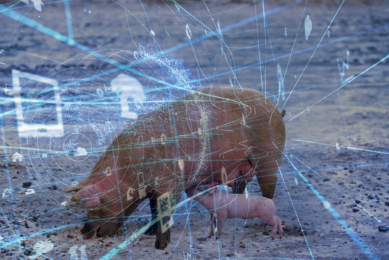Why I always invest in my sows

Best production practices fascinate swine nutrition technology expert Dr Casey Bradley, so she looks beyond least cost production standards. When considering the best approach for sows, she would like the animals to be on the move without pain. What type of nutrition goes best with that?
Another new season of my life has begun with Arthur entering preschool this year. The best way to describe our life now is that we are now ‘on the move’ and getting busier every week. That being said, the industry is always on the move, from monitoring market conditions to dealing with sick pigs; there is never a slow day for swine producers.
This fast pace can impact our decision-making process, influencing the optimal nutrition for our animals. A layer that we may neglect to consider, due to tight profitability margins. In my last column I discussed feed mitigation strategies, which can arguably be considered preventative nutritional strategies.

Read more expert columns at www.pigprogress.net/pigexperts
Incorporating new feed additives
Veterinarians also utilise vaccines and prescribed medication protocols to prevent and control diseases within our systems, but nutritionists are rarely given that opportunity with least cost formulations constraints.
As a nutritionist, we need to validate the depth of research and the utmost important P<0.05 with a return on investment (roi) of 3:1 to incorporate a new feed additive or nutritional strategy within our systems.>
Recently, Charoen Pokphand Foods in Thailand decided to convert to group housing for gestating sows. Now what does that look like in practice?
Investing in best production practices
Recently I have had the opportunity to work with a producer that doesn’t utilise least cost production standards but invests in best production practices. Interestingly, they just may be one of the top producers in wean-to-finish mortality and Grade A pigs at slaughter within North America. Having the opportunity to work with both sides of spectrum, from least cost to value added production, I have found that there is a lot to be learned and utilised from both ends and a whole range in between.
One of my strengths as a scientist and nutritionist is understanding value and how to optimise value within nutritional programmes. Therefore, in the past few months, I have developed and refined economic calculators and training programmes. Doing this has made me reconfirm that I will always invest in my sows. However, the scientist in me still needs the science to back-up my decisions, but for clarification I personally do not always chase the P<0.05 rule in interpreting sow data.>
Let’s take sow mobility for an example.
I want my sows to be on the move and stand-up, lay-down, and walk without burden or pain. It’s no secret that I have a passion for my sows; I work hard to prevent lameness and mortality in my sows. But how do I go about making an economic and scientific nutritional strategy for them?
For starters, I have read a lot of research papers on bone metabolism and development and even more papers on applied nutrition. Thus, I create a nutritional strategy that optimises bone in both the developing gilt and sow. This strategy includes a combination of sources of vitamins, especially vitamin D, trace minerals, and high levels of phytase.
Improving the replacement rate and mortality
For simplicity, if I improve my replacement rate and mortality by 5%, I would then need 25 less gilts per year (1,000 head basis) and could afford to invest $ 3-4/sow/year. Ultimately, this doesn’t include all the other values of this example, but at a $ 0.11-14/pig cost, this ultimately is a low risk opportunity to use a little biochemistry, bone physiology and applied research to keep my sows on the move.
In conclusion, have you reassessed your risk-reward equation for your system lately? If so, does your nutritionist have some potential value-added strategies for continuous improvement for your system? If not maybe it’s time to sit down and re-evaluate these opportunities.











